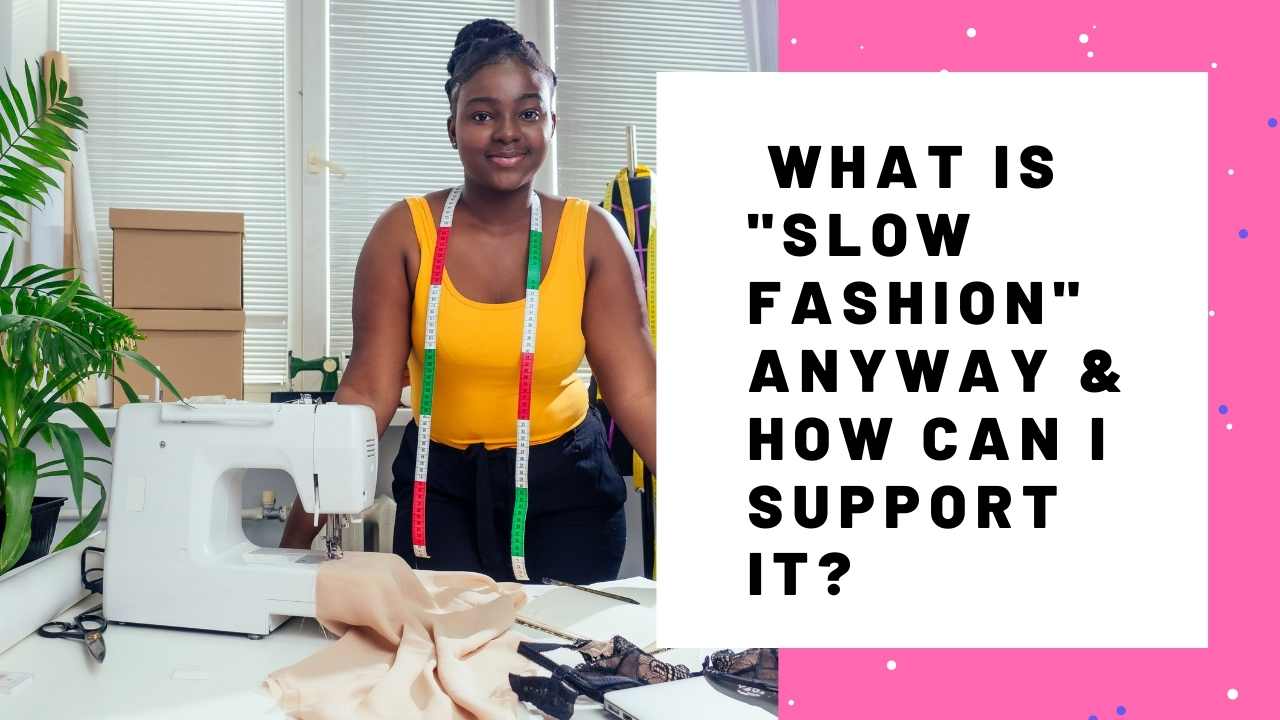First, let's talk about what it isn't: At its core, slow fashion is a rebuke of fast fashion—an industry built on cheap, poorly made garments that have a high social and environmental impact. While slow fashion doesn't have a hard-and-fast definition, it refers to a more nuanced, mindful way of shopping that prioritizes people and the planet. It could mean shopping secondhand, buying less, prioritizing natural fabrics, or some combination of all these things, depending on the consumer.
"Slow fashion is about really understanding what your needs are and finding the best product to address those needs. For me, slow fashion is about really thinking about your consumption, It's about thinking before you buy and slowing down the process."
Why is fast fashion so harmful?
The fast fashion industry that slow fashion seeks to replace treats clothes (and in some cases, the people who create them) as disposable.
It quickly cycles through massive amounts of water, dye, oil, and oftentimes chemicals to create clothing that can be sold at a low price point but isn't designed to last long. Then, it markets those clothes in a way that makes people want to keep buying them at a fast clip.
"The No. 1 issue of fast fashion is the amount that's being produced,". "The harmful chemicals that are used in production have been consistent over the years. The one thing that has changed is that we're producing a lot more." In order to support this increased production, some companies have cut corners in their supply chains. Millions of garment workers around the world now work in dangerous, sometimes deadly, conditions for meager pay.
How do I slow down my fashion consumption?
Since the fashion industry is plagued with so many problems, there's no one way to reduce your closet's impact. That's good news for anyone who wants to shop slow; it means you can find your own way to get involved based on your values, budget, and time constraints. Here are a few strategies that industry insiders recommend starting with in order to support a slower fashion future:
Anti-fracking? Look for natural materials.
Synthetic materials like polyester and nylon are made from oil and can leach tiny microplastics into the water supply when run through a washing machine. Natural, renewable materials, especially ones that can be grown quickly and without pesticides, tend to have less impact on the environment. Hemp, bamboo, wool, linen, and organic cotton are some eco-friendlier fabrics to prioritize. As long as you're not vegan, leather can also be less resource-intensive to create than synthetics (depending on how it's processed).
Which leads to an important point: As is the case with every tip on this list, this isn't a matter of ticking off a box and immediately adding to your cart. Once you find an organic cotton shirt that catches your eye, for example, go a level deeper and see where the cotton comes from, how it was cultivated, and how it was processed. Remember, this is a slow process for a reason!
"I always advise those interested to read about where clothes come from—about the impacts of cotton, about the supply chain of wool and cashmere, about water use in new clothing," says Anne Whiting, the designer of Anne James NY. "Understanding the whole supply chain really opens our minds to the importance of implementing and supporting sustainable change where we can."
Conscious of your footprint? Shop secondhand and vintage.
"Giving clothes a second or third life saves water, energy, and chemicals used for dyeing and processing." Megan Schuknecht, the director of design challenges at The Biomimicry Institute, tells mbg about the value of shopping secondhand. Every time you buy used, you're also casting a vote for durable clothes that are designed to stay in use for many wears across multiple owners.
The world of thrifting can be a little overwhelming (as mentioned, there are LOTS of clothes out there these days), but star vintage shopper Artise recommends going in with a goal, shopping solo so you don't get distracted, and always trying on since the sizing will be different depending on how old the piece is.
Low waste? Buy clothes knowing how you'll eventually get rid of them.
While fast fashion treats clothing as disposable, slow fashion recognizes its value as a material. When applied to fashion, recycling means turning old clothes into new clothes of similar value. This is really hard to do since fibers tend to lose strength and quality after being broken down (though a few brands such as For Days, Everywhere, and Opus Mind have started experimenting with it). These days, most worn-out clothing is downcycled and turned into less valuable materials like insulation and rags, which is still better than being sent to landfill.
When you purchase clothing, consider how you'll get rid of it once you're done with it. Will you send it off to be downcycled, or is it high-quality enough that you'll be able to donate or resell it instead? Asking these questions upfront might shift what you're buying.
Everyone should: Ask questions and beware of vague, unsubstantiated claims.
When poking around a fashion brand's website, see what you can find out about its three main categories: materials, makers, and supply chain. Be wary of any language that feels gimmicky or unsubstantiated. "Overarching, vague statements are the red flag," says Punjya. "Brands that are doing the work have a lot more to say about their supply chain. It's not a one- or two-sentence write-up; it's more of an explanation of the process."
For example, if a company says its clothes are made in a country, where is its factory located? Does it own the factory or share with other companies? Do the factory workers make a living wage? If these details aren't listed on the company's site, consider reaching out to ask. As a founder himself, Punjya can vouch for the fact that the more people write in to ask a brand questions, the more likely that brand is to make the answers public.
Everyone should: Be picky about what they buy.
For most people, where clothes are only worn a quarter as much as the global average—shopping slower will mean shopping less. Artise says that the best baby step toward sustainability is committing to going a month (or longer, depending on your current shopping habits) without buying any clothes. "The minute you know you can go without buying something, it starts to set in motion the mindset that you're buying needlessly," she says.
That initial spending freeze might show you that your closet is just fine as it is. Or it might reinforce that there really are some gaps. Once you identify what those are, take your time finding pieces that can fill them, holding out for ones that you'll want to wear again and again. Remember that you get what you pay for, and low cost usually means low quality (and low resale value).
A final note.
At the end of the day, not everyone will have the luxury of shopping this way. Many people can't afford to be picky about their clothing. They don't have the time to shop around for the perfect piece or the money to spend on durable designer items. If you do, it's your responsibility to use that purchasing power to support a more fair, equitable, and sustainable fashion industry for everyone.




